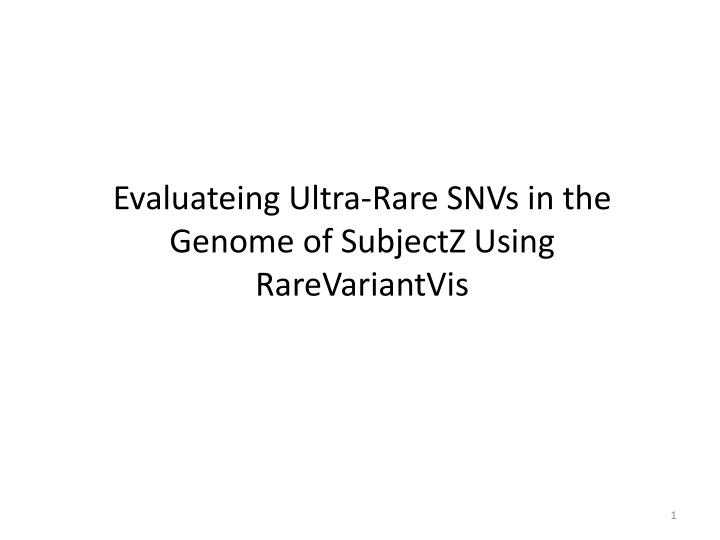
Exploring Ultra-Rare SNVs in SubjectZ's Genome with RareVariantVis
Dive into the analysis of ultra-rare single nucleotide variants (SNVs) in the genome of SubjectZ using RareVariantVis. Explore the visualization of causative variants in rare monogenic disorders through whole genome sequencing data and identify potential recessive disease hotspots and loss of heterozygosity regions. View detailed chromosome mappings and coding variants present in the Zimmer sample but not in Synder/NA12878.
Download Presentation

Please find below an Image/Link to download the presentation.
The content on the website is provided AS IS for your information and personal use only. It may not be sold, licensed, or shared on other websites without obtaining consent from the author. If you encounter any issues during the download, it is possible that the publisher has removed the file from their server.
You are allowed to download the files provided on this website for personal or commercial use, subject to the condition that they are used lawfully. All files are the property of their respective owners.
The content on the website is provided AS IS for your information and personal use only. It may not be sold, licensed, or shared on other websites without obtaining consent from the author.
E N D
Presentation Transcript
Evaluateing Ultra-Rare SNVs in the Genome of SubjectZ Using RareVariantVis 1
Short legend for figures x axis - position on chromosome y axis - zygosity (# of alternative variant reads / # of total reads in particular genomic position) orange lines - position of centromere (UCSC hg19) red horizontal line - theoretical line separating heterozygous and homozygous red continuous line - moving average of zygosity, window 2000 variants; when it reaches 1, region could be a loss of heterozygosity (LOH), potential recessive disease hotspot blue dots - SNVs in their positions green dots - rare, nonsynonymous coding variants, according to FunSeq2 (prematureStop + nonsynonymous) orange dots - rare, nonsynonymous coding variants present only in Zimmer sample (not in Synder/NA12878) Reference : Stokowy, T, et al. (2016) RareVariantVis: new tool for visualization of causative variants in rare monogenic disorders using whole genome sequencing data. Bioinformatics btw359 2






















